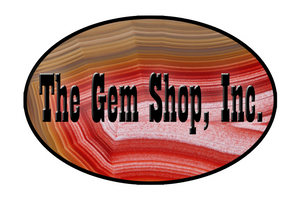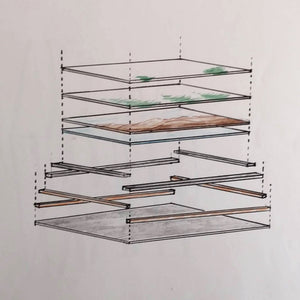Stone Intarsia is a term for the inlay technique of using cut and polished stones to create an image. Its history traces back to Italy and the Renaissance, where it was called pietre dure, meaning “hard stones”. This differed from mosaics as the stone itself was purposefully shaped to create the art, rather than arranging pieces of loose stone into a scene. It also typically features a stone frame of some kind, to help lock the individual pieces in place.
Besides stone, the intarsia technique can be used in many different media. Wood Intarsia is the most well-known and was used similarly, shaping and gluing together pieces to create a design. The technique of inlaid wood was widely used across northern and central Italy by the late Middle Ages. Masters of wood inlay decorated medieval Italian churches with choir screens, stalls, pulpits, and other church furnishings with the intarsia technique. Because of the difficulty of construction, stone Intarsia is generally small and oriented toward jewelry, while wood intarsia is generally for fine furniture and larger decorative use.
Intarsia also exists as a technique used in textiles and knitting. It involves changing colors at specific points to create a pattern or scene that is interlocked together. This is most often used in clothing, but yarn in gaining as a media used in fine art pieces as well.
Stone Intarsia as a lapidary art continues today, and classes and schools are available to those that want to learn how to do it. From a lapidary point of view the process can be difficult, tedious, and time-consuming. There are even special pieces of equipment that have been constructed specifically for intarsia work. Today, most people make use of a faceting machine because of the ease in grinding repeated angles.
Modern lapidary in the United States has had a particular interest in rocks that show natural pictures or scenes. Montana Moss Agate has always been cut to show off its scenic qualities, and the more scenic the stone the more valuable the piece. The discovery and promotion of the picture jaspers found in eastern Oregon has contributed to a greater general appreciation for natural pictures in stone.
Intarsia techniques have been used to enhance image recognition in these types of stones. The most common technique is orienting a particular rectangular scenic section of the stone, and framing it with a stone of a solid color. Backing is another intarsia technique used extensively. The making of opal triplets can be considered an intarsia technique, but in this case the purpose is not to create an image but to enhance color and durability. Clear agate with inclusions can be enhanced by having a contrasting black, white, or colored background glued onto the back of the stone. Scenic stones can use a turquoise back to create the illusion of sky through the clear part of the agate.
I became interested in the art of intarsia a long time ago, and over a period of time produced several hundred intarsia pieces. Many of these were simple framing of scenic rock or interesting designs, but I began to develop a system of creating or enhancing scenes by gluing agates together in layered sheets. Previously, this technique had only been used to create a simple sky or enhance a pattern with a backing. You can use the various features and translucency in different slabs to play together and create a more detailed scene. I then combine this with the framing technique to complete the picture.
As the complexity of construction increased, the amount of time to produce one also increased and eventually I had to stop making them because of the time involved relative to my other lapidary responsibilities. For reasons I would rather not say I have decided to start making them again. I dug through those dusty shelves and found the boxes containing the hundreds of pieces of stone used to select from 25 years ago that didn't work out or were only partially finished. I have a few finished now, and plan to continue working.
- Gene Mueller
This is a picture showing the general construction of one of the intarsia pieces. The center is made first and then the borders are applied. The entire piece is then backed, and the final shape determined.
Each intarsia I created was photographed for inventory. They cannot fit them all anymore.
This intarsia piece was given an AGTA (American Gem Trade Association) Cutting Edge Award in 1992.Center:
Wiggins Fork Moss Agate
Santa Fe Plume Agate
Turquoise
Black BasaltBorder:
Black Onyx
Magnesite
Black OnyxConstructed from 16 individual pieces






Comments